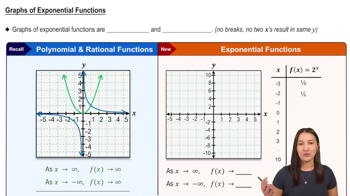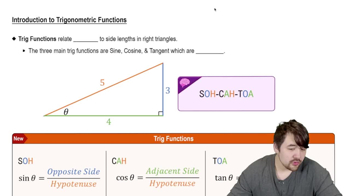Table of contents
- 0. Functions7h 52m
- Introduction to Functions16m
- Piecewise Functions10m
- Properties of Functions9m
- Common Functions1h 8m
- Transformations5m
- Combining Functions27m
- Exponent rules32m
- Exponential Functions28m
- Logarithmic Functions24m
- Properties of Logarithms34m
- Exponential & Logarithmic Equations35m
- Introduction to Trigonometric Functions38m
- Graphs of Trigonometric Functions44m
- Trigonometric Identities47m
- Inverse Trigonometric Functions48m
- 1. Limits and Continuity2h 2m
- 2. Intro to Derivatives1h 33m
- 3. Techniques of Differentiation3h 18m
- 4. Applications of Derivatives2h 38m
- 5. Graphical Applications of Derivatives6h 2m
- 6. Derivatives of Inverse, Exponential, & Logarithmic Functions2h 37m
- 7. Antiderivatives & Indefinite Integrals1h 26m
- 8. Definite Integrals4h 44m
- 9. Graphical Applications of Integrals2h 27m
- 10. Physics Applications of Integrals 2h 22m
1. Limits and Continuity
Finding Limits Algebraically
Problem 2.43
Textbook Question
Limits and Infinity
Find the limits in Exercises 37–46.
sin x
lim ------------- ( If you have a grapher, try graphing
x→∞ |x| the function for ―5 ≤ x ≤ 5 ) .
 Verified step by step guidance
Verified step by step guidance1
Identify the function for which you need to find the limit: \( \frac{\sin x}{|x|} \).
Understand that as \( x \to \infty \), the absolute value \( |x| \) behaves like \( x \) because \( x \) is positive.
Recognize that the sine function, \( \sin x \), oscillates between -1 and 1 for all real numbers \( x \).
Consider the behavior of the fraction \( \frac{\sin x}{x} \) as \( x \to \infty \). Since \( \sin x \) is bounded and \( x \) grows without bound, the fraction approaches zero.
Conclude that the limit of \( \frac{\sin x}{|x|} \) as \( x \to \infty \) is 0, because the numerator is bounded while the denominator increases indefinitely.
 Verified video answer for a similar problem:
Verified video answer for a similar problem:This video solution was recommended by our tutors as helpful for the problem above
Video duration:
2mPlay a video:
Was this helpful?
Key Concepts
Here are the essential concepts you must grasp in order to answer the question correctly.
Limits
Limits are fundamental in calculus, representing the value that a function approaches as the input approaches a certain point. They help in understanding the behavior of functions at specific points, including points of discontinuity or infinity. In this context, evaluating the limit as x approaches infinity allows us to analyze the long-term behavior of the function sin(x)/|x|.
Recommended video:

One-Sided Limits
Behavior of Functions at Infinity
When analyzing limits as x approaches infinity, we assess how a function behaves as its input grows without bound. This often involves determining whether the function approaches a finite value, diverges to infinity, or oscillates. For the function sin(x)/|x|, understanding its behavior as x becomes very large is crucial for finding the limit.
Recommended video:

Graphs of Exponential Functions
Trigonometric Functions
Trigonometric functions, such as sine, exhibit periodic behavior, oscillating between fixed values. The function sin(x) oscillates between -1 and 1, which is important when considering its limit in conjunction with |x|. This periodic nature influences the overall limit of the function sin(x)/|x| as x approaches infinity, as the oscillation will be divided by an increasingly large denominator.
Recommended video:

Introduction to Trigonometric Functions

 5:21m
5:21mWatch next
Master Finding Limits by Direct Substitution with a bite sized video explanation from Callie
Start learningRelated Videos
Related Practice







